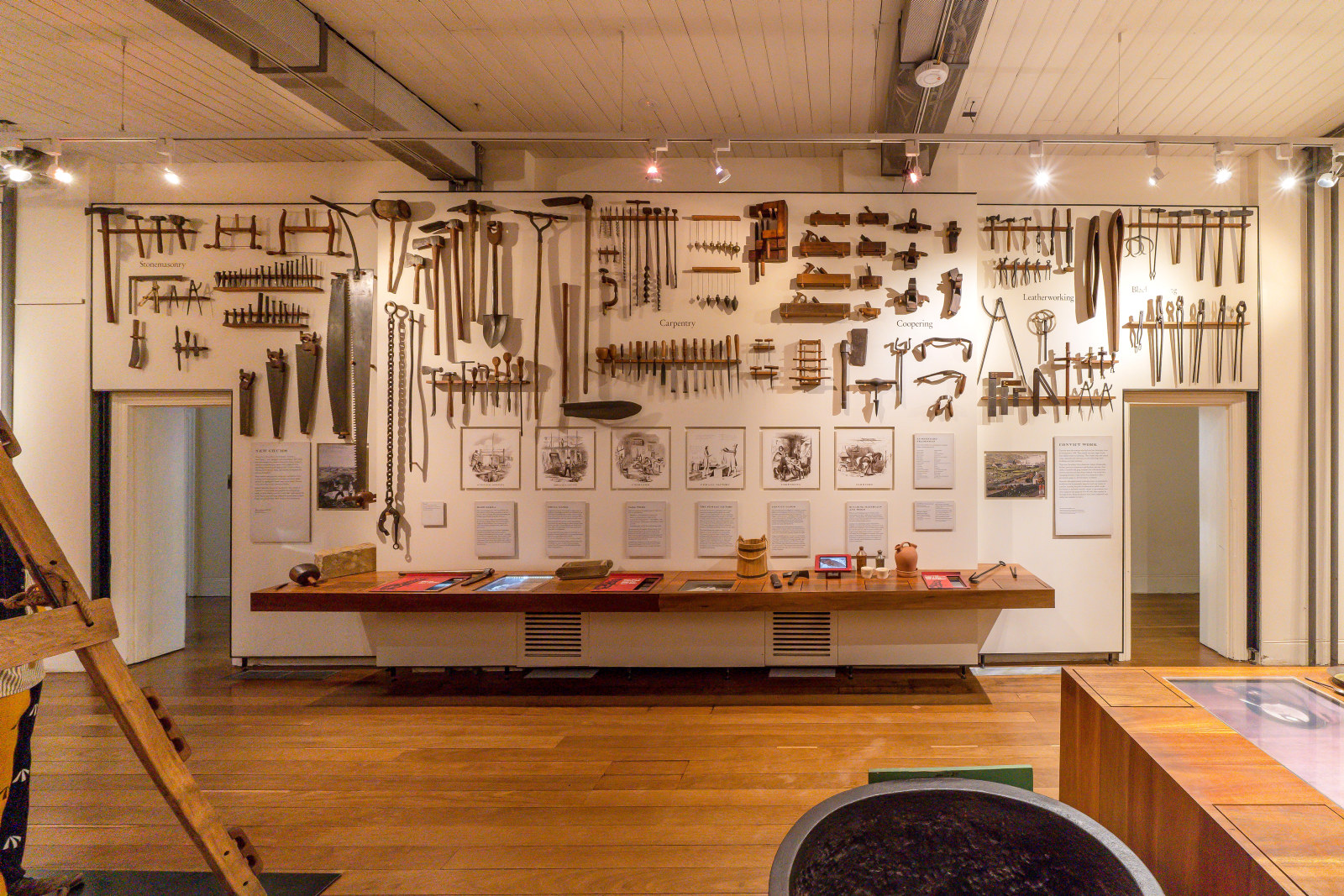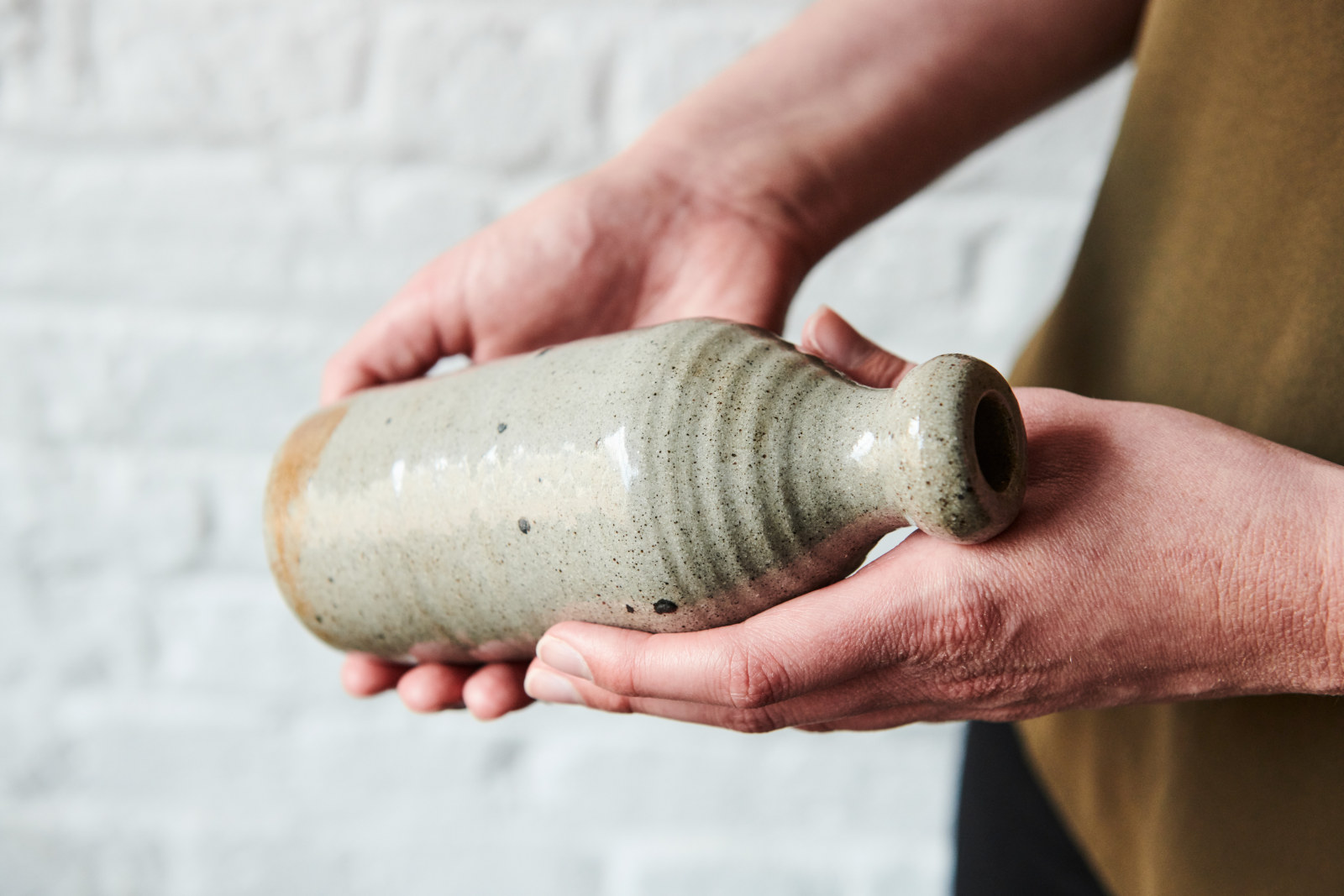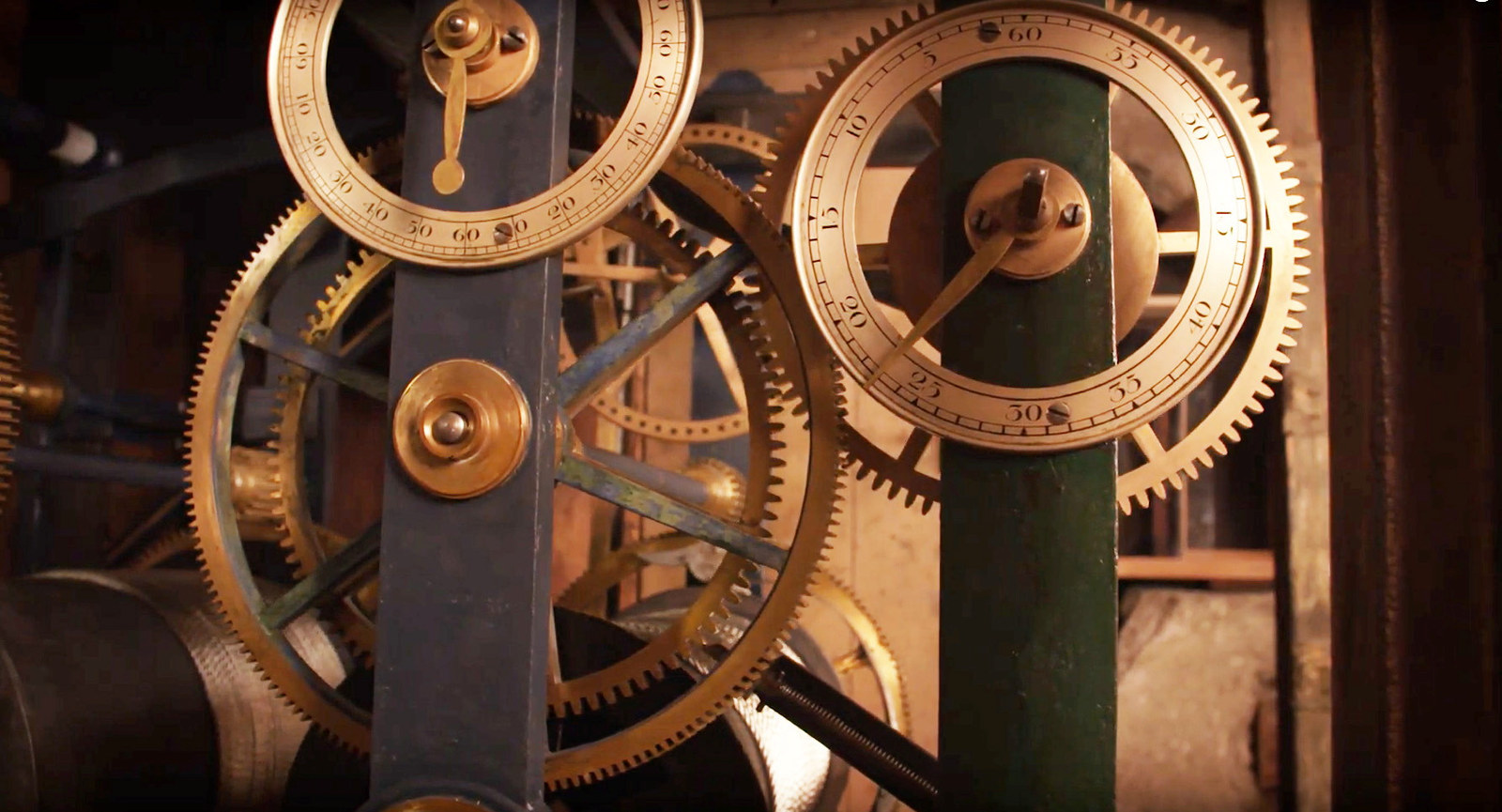Clock-winding crank
c1819
This sturdy crank was used for many years to wind the Hyde Park Barracks clock which, with its hourly chime, dictated the daily routine of all the convicts in Sydney. This crank was probably first used by convict clockmaker James Oatley, who was paid 75 pounds to install the new clock in 1818-9. The Barracks clock was the convict’s master, but was often unreliable and became a talking point for Sydney’s townspeople, deceiving them ‘eleven times out of twelve that it strikes’. It was considered ‘incurable’ until the workings were replaced in 1837 with parts made by Vulliamy of London.
The Hyde Park Barracks clock is one of the oldest public timepieces in Australia. Even today, the Hyde Park Barracks clock and bell weights are still wound, once a week, with 28 revolutions of a more modern crank.
… the Hyde Park Barracks clock is so much out of repair. This horological prototype of its thrifty owner, manages to deceive us eleven times out of twelve that it strikes…
‘Sans Montre’, The Australian, 10 August 1827, 2.
Published on
Related

Convict Sydney
Objects
These convict-era objects and archaeological artefacts found at Hyde Park Barracks and The Mint (Rum Hospital) are among the rarest and most personal artefacts to have survived from Australia’s early convict period

Learning resources
Explore our range of online resources designed by teachers to support student learning in the classroom or at home

The Hyde Park Barracks clock
In this video, former curator Gary Crockett discusses the history of the Hyde Park Barracks clock.